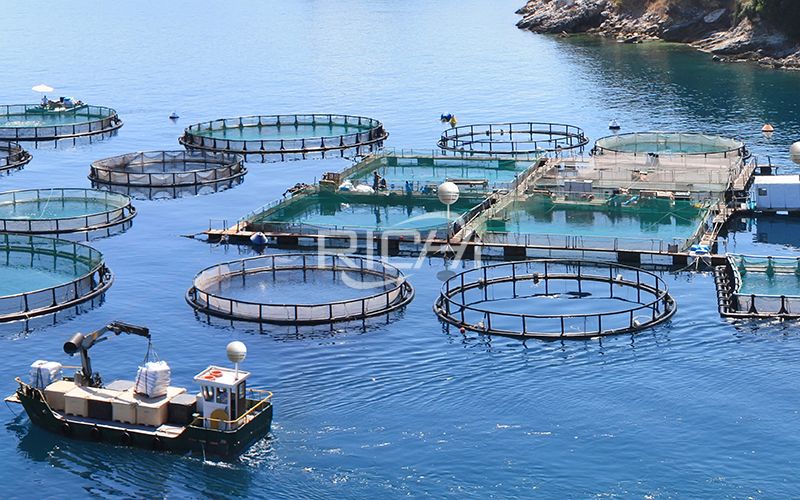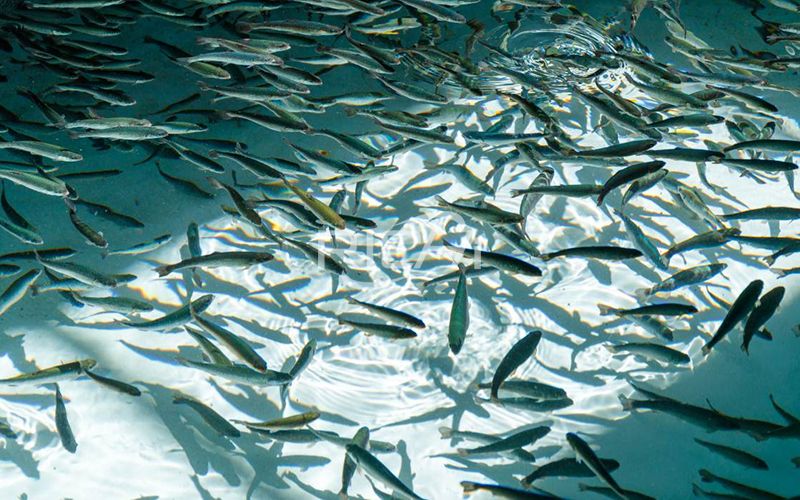
This is where you find all our press releases and news articles.
It depend on which species you want to harvest and which aquaculture principle do you use to farm those fish.Most of fish farming cost come from fish feed expense,there are many aquaculture principle to reduce fish feed expanse. One of the things my teacher emphasized to me when he was teaching me was the importance of quality feed for your fishes; according to him, good feed is there on the same level with quality water, and it is often what determines the profitability of a farmer.
While most fish farmers focus only on getting inexpensive feed for their fishes, feeding your fishes should be less about the cost but more about the profit margin; so, you might be spending 3 to 4 times more than the average farmer on feed, but there’s nothing wrong with that if it makes your fishes 5 to 6 times bigger than their fishes, significantly increasing your profit margin.

How Does A Fish Farm Make A Profit
Since there are different stages of catfish growth, there are different stages of fish feed; fish feed are often denoted in mm, so you’ll see/hear about 1.5mm feed, 1.8mm feed, 2mm feed, 4mm feed, 6mm feed etc.
There’s also extruded (or floating) and non-extruded (or sinking) feed. What I recommend is to give your fishes extruded (or floating) feed for up to 2 months before switching to the non-extruded (or sinking) feed.
Catfishes are mostly bottom feeders, so by their very nature they are designed to be eating non-extruded (or sinking) feed, but the reason I recommend giving them floating feed at the early stage is because they are more fragile then.
With floating feed, you can put the feed on the pond gradually and let them eat it; the risk of overfeeding is significantly reduced, thereby ensuring there is no water pollution that can lead to high mortality in your very fragile juveniles.
Like I said earlier, there are various fish feed sizes, whether you go for floating or sinking feed; sinking feed is usually bigger, and longer, than floating feed.
From my experience, here are the different sizes I’m currently aware of:
1.5mm, 1.8mm, 2mm, 3mm, 4mm, 6mm, 8mm, 10mm, etc.
The bigger you fishes, the bigger the feed size they can pick.
Here’s what I recommend if you just stocked your ponds, if your fishes fall into the following categories:
As your fishes grow, the size of feed they can pick will increase. Here’s the feed size I recommend for bigger fishes, based on their size/weight, if you’re to give them floating feed:
All things being equal, your fishes should be around 200 – 300 grams in 2 months with floating feed alone, if they are being fed properly; after then, you can switch to sinking feed and give them the following feed sizes:
If your fishes exceed 1kg in weight, and you’re able to get bigger feed sizes, then you can consider giving them 8mm, or even later 10mm, feed sizes. 3 to 4kg fishes eat 6mm sinking feed just fine, though, so don’t worry too much if you can’t find bigger feed sizes.

How Does A Fish Farm Make A Profit
How often you feed your fishes will differ depending on a lot of factors, but for the results I get – an average of 1.5kg to 2kg fish size in 6 months – here’s what I recommend:
All things being equal, I feed my fishes daily until they reach the 6 months mark when I sell them; this is absolutely essential if you want optimal results.
Buy Fish Feed Or Produce Your Own Feed
In the short term, it is easier to buy feed, and in the long term, it is more profitable to buy a fish feed pellet machine to produce pellets. In the short time that I’ve been in this business, I’ve realized that you’ll be more profitable if you make your own feed as opposed to buying feed from major producers.
What are the equipment for producing fish feed pellets? Fish feed pellet machine, fish feed extruder and fish feed pellet production line equipment. How to choose? Choose according to output. If you produce one or two hundred kilograms of fish feed pellets, you can choose a single fish feed pellet machine. If it is more than 300 kilograms, it is recommended to directly install a fish feed pellet production line, including a fish feed extruder or a fish feed pellet machine.
Feed Formula for 200 – 600 Grams Catfish
Your catfishes are still very small and tender at this stage, so they need quality nutrient in their feed; this formula results in a feed rich in good protein but it is a bit expensive; it is not as expensive as using floating feed, though.
You should only have to use this feed formula for around 1 – 2 months.
(Based on this formula, 1 ton of fish feed will have: 250kg fish meal, 300kg soya meal, 200kg GNC, 200kg Dough, 50kg molasses)
Based on this formula, 1 ton of fish feed will have: 100kg fish meal, 400kg soya meal, 200kg GNC, 250kg Dough, 50kg molasses.
Related News
What is the recipe for crayfish pellets?
Where are the best quality 5-7T/H Fish feed equipment for sale
Aquatic Feed Pellet Machine And Extruder For Cat Fish Food Production
Having the right mix of reliable, high-quality pellet machine and pelletizing systems and expert support is essential to your success. Watch how our end-to-end feed pellet plant solutions have helped our customers optimize their performance.
Our customized and future-proofed turnkey pellet plant solutions is designed with you at the core. From vision to reality and beyond, our team stays connected with yours. Giving you peace-of-mind with an expert at your side.

At RICHI, we go beyond project completion. With RICHI Servicee, we’re your dedicated partners in success. Count on us for expert guidance, minimal downtime, and optimized productivity. Choose RICHI for unmatched service and support.



Meet global product demands and quality standards with industry-leading pellet plant design, engineering, equipment, and construction services for pellet processors.


Your Partner Beyond Project Completion
2000+ cases
RICHI is the leading designer, manufacturer and builder of pellet plants in the world, completing over 2000 projects in 140 countries across 6 continents.
Read More
Increase plant productivity, profitability, and safety by integrating high quality equipment into your pellet production line. Over the years, RICHI has become China's top pellet equipment manufacturer. At the same time, RICHI has established valuable partnerships with the world's leading component and raw material manufacturers to bring you the best there is in technology, automation, and efficiency in pelleting plant machinery.

For nearly 30 years, RICHI has been providing best-in-class pellet plant equipment and services to clients across a variety of industries, sizes, and needs. We pride ourselves on the knowledge and skill that each team member possesses – from our technical sales team to our process design engineers. You can count on RICHI Machinery to take your operation to the next level of innovation, quality, and success.
Need help with your pellet manufacturing plant project? Contact us today.
ANIMAL FEED
BIOMASS
WOOD
ORGANIC FERTILIZER
AQUA FEED
CAT LITTER
MUNICIPAL WASTE RECYCLING
SPECIAL PELLET PRODUCTION
RICHI Machinery continues to deliver world class pellet mill equipment, pellet plant engineering and project solutions that add value to our customers in the animal feed, wood waste, agriculture waste, organic fertilizer, cat litter and special pellet products industries. Throughout the years, we RICHI Machinery have built strong brand, becoming industry-leading pellet machine manufacturer. We value integrity, promise quality, and prioritize your success.
Learn MoreWith our expert team, we precisely implement your process engineering requirements in pellet mill and pelletizing plant systems. No matter which industry you’re in – we understand your needs and deliver solutions that meet the highest standards.
At RICHI, quality comes first. Our pellet making machine and related pellet line equipment undergo rigorous quality controls to ensure they meet the highest standards. Rely on products that are durable, safe, and efficient.
With decades of experience in pellet machine and pellet production line production, we have earned a reputation as a trusted partner in various industries. Our expertise allows us to cover a wide range of applications.
Not only do we offer premium pelleting equipment, but we are also experts at designing, building, installing, and maintaining facilities from the ground up. Our expertise is within pellt plant process design, discovering the most efficient, productive, and profitable way to handle your materials in an end-to-end cycle.

Keeping in touch with us is an effective way to solve all your problems. If you have any needs or questions, please leave your contact information, then RICHI technical consultants will send design, quotation, videos to your mailbox. You can also contact us directly via WhatsApp: +86 13838389622
Copyright©2015-2024 by HENAN RICHI MACHINERY CO., LTD. All rights reserved.